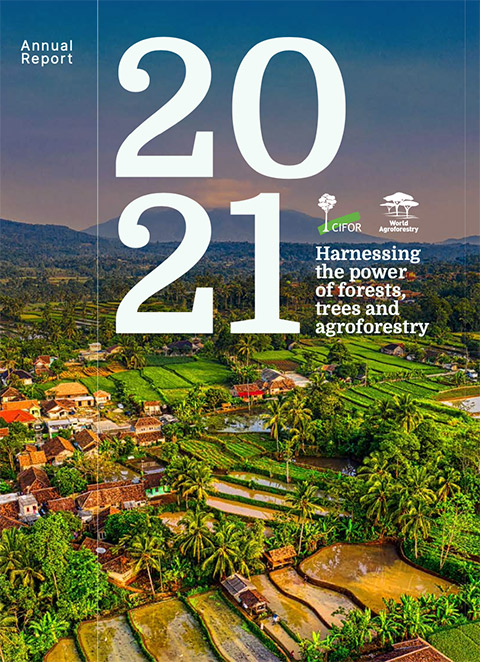Smallholder farming is fraught with challenges in parts of India’s Odisha State. Frequent droughts, floods and water shortages often prevent the cultivation of more than one crop per year, driving farmers and landless labourers to migrate to neighbouring states to work in brick kilns or other jobs during the rainy season.
One project sought to break this cycle by building the capacity of farmers to adopt better farming practices such as intercropping and agroforestry using improved seed varieties and, ultimately, to improve the consumption of diverse and nutritious foods while generating employment and income for marginalized populations. Those who took up the practises – such as introducing fruit trees along with bio-fortified and high-yielding rice – are enjoying better food, nutrition and income security.
“Despite the challenges introduced by the Covid pandemic, the project managed to achieve or surpass all targets,” said Shiv Dhyani, a senior agroforestry specialist at CIFOR-ICRAF.
Although researchers were able to hold only 80 direct farmer-scientist interactions, farmers received technical guidance on agroforestry and many increased harvests by as much as 282 percent. During its four years of implementation, the project introduced improved varieties of rice over 10,923 hectares. Some of these varieties boost protein intake by over 10% as well as greater amounts of zinc and iron.
“This nutritional and income stability has eliminated the need to migrate for many smallholders,” said Dhyani.
To support them, CIFOR-ICRAF’s India country team, its Spatial Data Science and Applied Learning Lab (SPACIAL), the Central Agroforestry Research Institute of ICAR, and the Agriculture Department of the State Government of Odisha developed an agroforestry app that allows farmers, extensionists and decision makers in Odisha to access best practices for agroforestry systems (both trees and crops) from their smartphones. Users register to access modules including information on crops and trees, as well as an agroforestry planner and locations of nearby nurseries.
“The app gives recommendations of suitable crops, trees and agronomic practices, enabling farmers and extension workers to identify the right agroforestry species for farms, including sources of quality planting material, and receive appropriate suggestions for tree and crop combinations,” said Rajkumar Singh, a geoinformatics research scientist at CIFOR-ICRAF.
The ‘Enabling Smallholders to Produce and Consume more Nutritious Food through Agroforestry Systems in Odisha project’ ran from May 2018 through March 2022 and was implemented by CIFOR-ICRAF in collaboration with the Central Agroforestry Research Institute, Central Arid Zone Research Institute, National Rice Research Institute, Department of Soil Conservation and Watershed Development, and other line departments with funding from the Government of Odisha.
Partners: Government of Odisha, State departments for agriculture, horticulture, livelihoods and bamboo, ICAR- Central Agroforestry Research Institute, and ICAR-National Rice Research Institute

